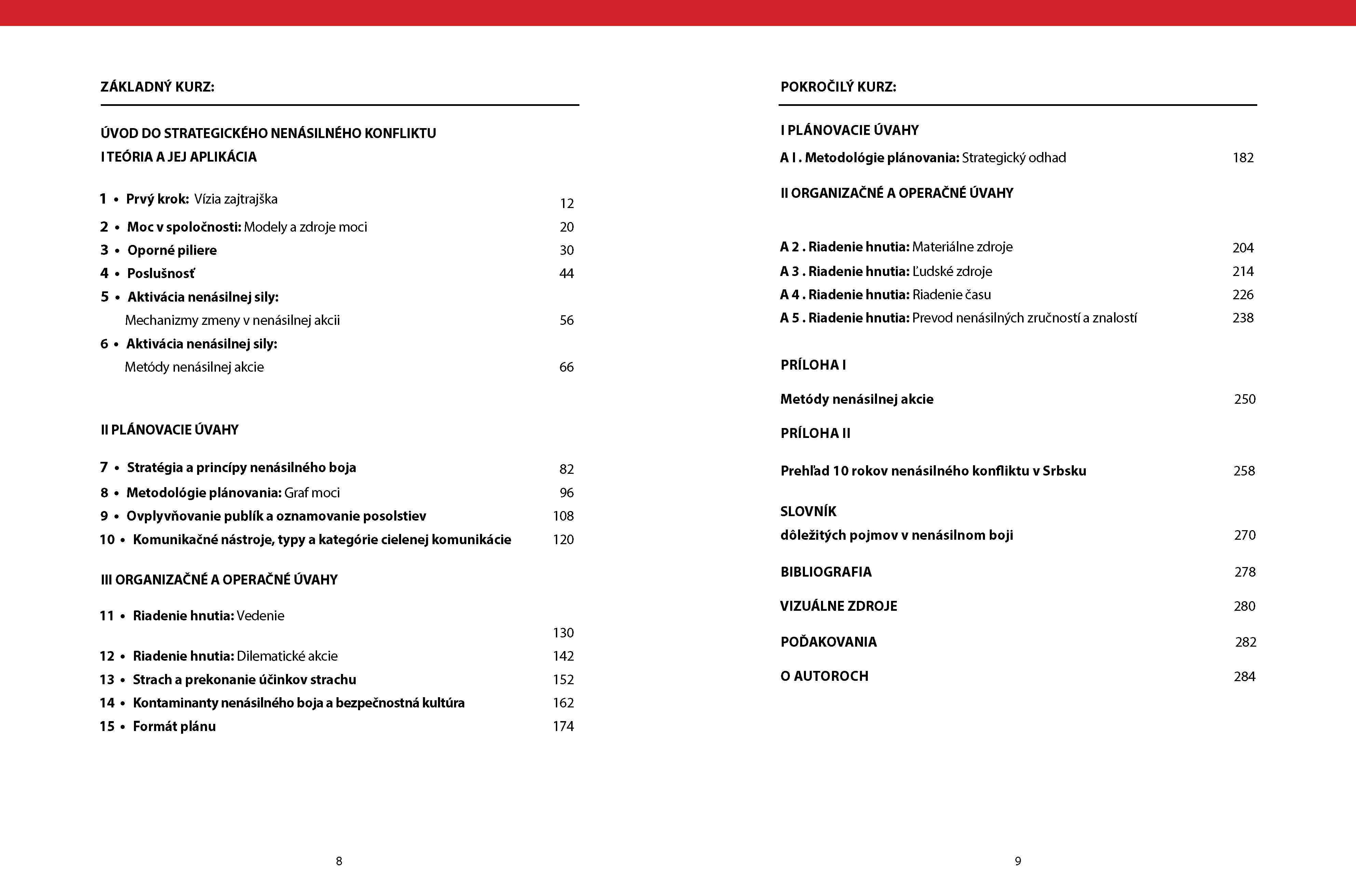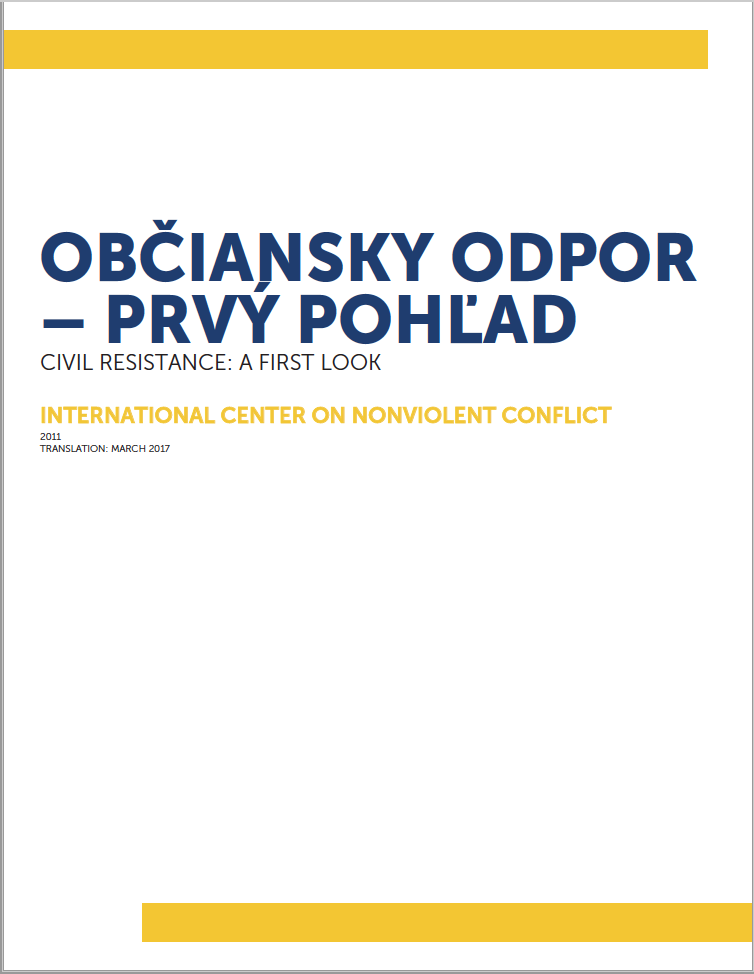CANVAS: Sprievodca Efektívneho Nenásilného Boja
The content of the curriculum is divided into three parts:
I. Theory and its applications: The goal of these lessons is to provide a concrete framework for people to understand how nonviolent action works. First, all movements start with the desire for change, so we offer a methodology to help groups develop their vision for what they want to achieve (Lesson 1). We then address how nonviolent movements can gain the power to achieve that vision. By emphasizing that political power comes from people’s ongoing consent and obedience to their society’s political, economic, and social systems, it becomes clear that nonviolent movements can gain power and create change by shifting people’s consent and obedience patterns (Lesson 2). In order to do this, nonviolent resisters must understand the roles that key organizations and institutions (which we call “pillars of support”) play in their society (Lesson 3), what people’s motivations are for consent and obedience (Lesson 4), how nonviolent movements produce change in society (Lesson 5), and the tactics and methods that nonviolent movements have at their disposal (Lesson 6).
II. Planning considerations: There is rarely victory for nonviolent movements without a strategic plan. Therefore, an understanding of basic strategic principles (Lesson 7) as well as tools and techniques to analyze their past and current situation (Lesson 8 and Lesson A1) is important as movements develop their strategic plans. An essential part of those plans will be communications. How do movements effectively communicate what they stand for? Developing effective messages and analyzing audience segments (Lesson 9) and understanding the tools and types of targeted communications (Lesson 10) are essential. Targeted communication is one of the most important parts of any movement’s strategic plan.
III. Organizational and operational considerations: Nonviolent movements are faced every day with stresses in the areas of leadership (Lesson 11), fear-management (Lesson 13), and avoiding contamination (Lesson 14), so they need to be prepared. They also need to be tactically innovative and choose issues and actions that put their opponents in dilemmas (Lesson 12). Finally, management of key resources (material resources, human resources, time, and knowledge) are critical to operating a nonviolent movement or campaign. The advanced campaign management package (Lessons A2, A3, A4, and A5) addresses these issues.
Extending Horizon Books, 1990
Preklad: CANVAS, 2007
Publikované v Srbsku
ISBN 978-86-7596-087-4









